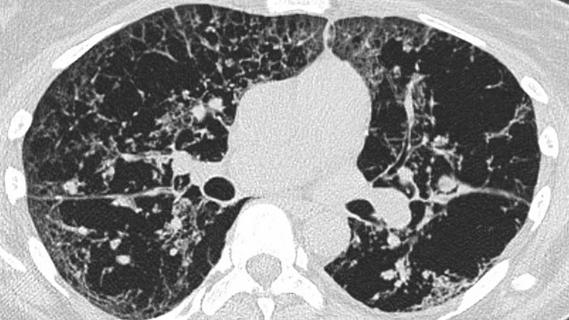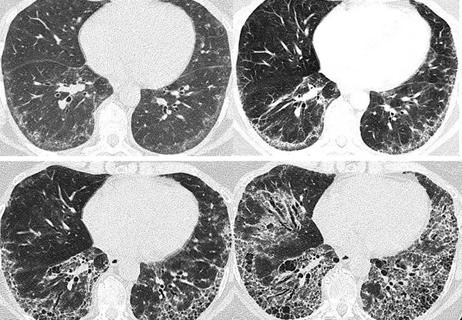Management and diagnostic insights from an infectious disease specialist and a pulmonary specialist

Advertisement
Cleveland Clinic is a non-profit academic medical center. Advertising on our site helps support our mission. We do not endorse non-Cleveland Clinic products or services. Policy
Although rare, it’s important to have a high index of suspicion for nontuberculous mycobacteria (NTM) in patients with underlying lung diseases who have persistent symptoms or frequent exacerbations that do not respond to standard therapy. Unlike tuberculosis, which typically spreads from person to person, NTM is usually more common in the environment, especially in soil and water.
In a podcast episode of Respiratory Exchange, Cyndee Miranda, MD, an expert at Cleveland Clinic’s Infectious Disease department, and Joseph Khabbaza, MD, an expert from the Pulmonary Medicine department at Cleveland Clinic, delve into the disease, the diagnostic process and management strategies, and the value in taking a multidisciplinary approach to care.
“Very early on, most of my patients with NTM were people I was already caring for who had COPD or asthma, and I never thought about it in their differential,” says Dr. Khabbaza. “I just started sending cultures, and then I'd be capturing it. So, these were people under my nose for years. These were not new bronchiectasis referrals; they were not new NTM patients. These were people I was taking care of. And by developing that index of suspicion, I was able to catch many.”
An NTM diagnosis often involves repeated sputum cultures, but the number of NTM species can make the process a challenge.
“There are a lot of NTM species — over 200,” explains Dr. Miranda. “Just to point out, not all of them are significant, and certainly not all of them cause specifically pulmonary infections. So, for example, you know, because there could be environmental contamination that can be attributed to NTMs, especially if you just find it in one sputum…but there are guidelines [from the American Thoracic Society (ATS) and the Infectious Diseases Society of America (IDSA)] there to help us decide who meets criteria for diagnosis of these nontuberculous mycobacterial infections.”
Advertisement
In addition to providing an overview of NTM, the episode also covers:
Click the podcast player above to listen to the episode now, or read on for a short, edited excerpt. Check out more Respiratory Exchange podcast episodes at clevelandclinic.org/podcasts/respiratory-exchange or wherever you get your podcasts.
Podcast Host Raed Dweik, MD: So, what I have here, can you just tell us who should be tested for it? When do you suspect it and who should be testing for it?
Dr. Khabbaza: Really, anyone who has underlying pulmonary disease. Anything where the normal clearance of secretions, mucus and bacteria might be impaired — that is going to put someone at risk of developing nontuberculous mycobacteria lung disease. So, I think about it most in people who have recurrent pneumonias. I mean that to me is, and I think in studies, that's been one of the top comorbidities seen in people with NTM lung disease, a history of recurrent pneumonia that responds to regular antibiotics. So, these are not mycobacterial acute pneumonias, but having that NTM in the background.
They form layers of slime inside our windpipes, essentially. So those are what we call bio films. They also live intracellular inside the alveoli macrophages. So, they kind of just hang out and kind of slowly kind of brew. Maybe cause some low-grade inflammation and does not cause symptoms, but it makes people susceptible to regular pneumonias. So recurrent pneumonia is a big one for me. And anyone with a chronic cough or uncontrolled chronic lung disease. So, recurrence COPD exacerbation, recurrent asthma exacerbation.
Advertisement
These are people I'm always wondering, is there something brewing in their lower airways leading to this picture, but really anyone who has any pulmonary disease or is even on inhaled corticosteroids, is someone who should be in your differential if they run into symptoms or uncontrolled disease down the road.
Dr. Dweik: So Cyndee, any thoughts on that? That seems like a lot of people. But in [Infectious Disease], you probably have a different view when you see there.
Dr. Miranda: I agree, actually, with what Joe said. Especially those that have, let's say, bronchiectasis patients, COPD, frequent exacerbations that really don't get better on antibiotics, and it's one exacerbation after another. That's when you think about sending mycobacterial cultures specifically. We also think about NTM diagnosis with compatible symptoms like respiratory symptoms or systemic symptoms in patients who are also immunosuppressed. And patients who are on TNF Alpha inhibitors might increase their risk for developing NTM disease.
There is also a group of patients with no obvious risk factors. And this is the Lady Windermere syndrome, which you probably heard about. And these are typically post-menopausal women, tall, slender, with certain body habits. Like pectus excavatum and scoliosis. So, we have seen NTM lung disease in these patients as well.
Advertisement
Advertisement

Rising rates in young miners illustrate the need for consistent prevention messaging from employers and clinicians

Multidisciplinary focus on an often underdiagnosed and ineffectively treated pulmonary disease

Treatments can be effective, but timely diagnosis is key

A Cleveland Clinic pulmonologist highlights several factors to be aware of when treating patients

Patient experience improves with a multidisciplinary approach

Formal assessment aimed at unmasking psychological distress following PE treatment

A mindset shift has changed the way pulmonologists both treat and define PFF

Pediatric rheumatologist discusses rare diagnosis, aggressive treatment regimen and outcomes